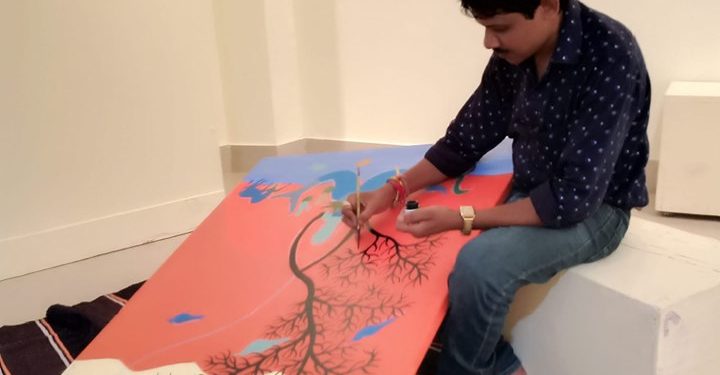BHUBANESWAR: Eminent contemporary painter Ramhari Jena Tuesday inaugurated a five-day tribal painting camp organised by the Lalit Kala Akademi on its premises here.
The workshop was attended by 12 artists from Odisha, Bihar, Jharkhand, Madhya Pradesh and Chhatisgarh.
Interacting with Orissa Post, artist Pramod Barua said, “Gond comes from the Dravidian expression ‘konda,’ meaning ‘the green mountain.’ The documented history of Gond people goes back 1400 years, but as they inhabit areas where rock paintings dating back to the Mesolithic era have been found, their experiences probably date back even further.”
“Many Gond customs echo their Mesolithic forbearers. An example is the custom of decorating the walls of their houses, an activity that may have originated from their cave dwelling ancestors,” he said.
Venkat Raman Singh Shyam, a tribal artist from Bhopal, who portrayed life after destruction with his fish and washer man painting, said, “The Gonds are the largest tribal painters in central India numbering around four million. Though mostly living in Madhya Pradesh, they are present in significant numbers in Andhra Pradesh, Maharashtra, Chhattisgarh and Odisha.”
“The word ‘Gond’ comes from the belief that a good image brings good luck. This belief made the Gonds decorate their houses and floors with tattoos and motifs. Today, Gond art products like paintings on wood, painted wooden trays and boxes have become popular globally.”
Gond art hasn’t escaped the eye of art connoisseurs in the country. The Indian government is trying to preserve Gond paintings.
Odia tribal painter Dinesh Gamanga said, “Through Saurya paintings, I am portraying the life of Saurya tribes. We are also preparing Gond paintings.”






































